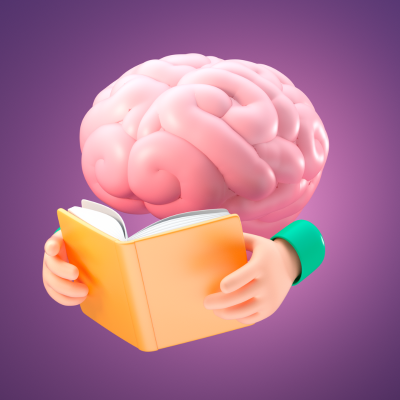Introduction
Embarking on the journey of learning a foreign language is akin to setting sail on uncharted waters. The linguistic landscape is rich, diverse, and at times, daunting. As language enthusiasts and learners delve into this intricate voyage, one element stands out as the beacon guiding them through the linguistic labyrinth – vocabulary. In the realm of foreign language acquisition, vocabulary is the lifeblood, the essence that breathes vitality into communication. This masterclass serves as a comprehensive guide, offering not just methodologies but a profound understanding of the intricacies involved in mastering foreign language vocabulary.
The Crucial Role of Vocabulary
Before we delve into the intricate web of language acquisition strategies, it’s imperative to comprehend the pivotal role vocabulary plays in the linguistic tapestry. Vocabulary is not merely a collection of words; it is the cornerstone upon which sentences are constructed, ideas are articulated, and thoughts are communicated. When one embarks on the journey of learning a foreign language, the acquisition of vocabulary is not an ancillary task; it is the primary task. Thus, this masterclass positions itself not only as a guide but as a transformative experience that recognizes and harnesses the power of words.
The Challenge of Vocabulary Learning
Learning a new language, with its nuances, idioms, and diverse vocabulary, is undoubtedly a formidable challenge. It requires a harmonious interplay between dedicated effort and a strategic approach. The common adage “work smart, not hard” resonates profoundly in the realm of language acquisition. As learners traverse the path of vocabulary acquisition, this masterclass aims to equip them not only with the tools but also with the wisdom to navigate this challenging terrain.
Decoding the Learning Process
At the heart of effective language learning lies the understanding of the learning process itself. This masterclass transcends the conventional boundaries of language tutorials; it is an immersive journey into the cognitive science that underpins memory systems. Language acquisition, particularly the memorization of vocabulary, is not a rote task; it’s a dynamic process that involves active engagement with both short-term and long-term memory. Understanding this symbiotic relationship is akin to holding the key to a treasure trove of linguistic prowess.
Forging Connections for Profound Learning
Cognitive science offers a profound lens through which we can examine the learning process. At its core, the science of cognition advocates for the forging of connections, especially between new and pre-existing knowledge. The journey of meaningful learning begins when novel information seamlessly integrates with established conceptual frameworks. In essence, this masterclass serves not only as a linguistic guide but as a cognitive expedition, unraveling the intricate dance between short-term and long-term memory.
Retrieval Practice: The Art of Memory Modification
Retrieval practice emerges as a cornerstone in our exploration of language learning. It is the art of actively summoning information from the recesses of long-term memory. The metaphorical act of “calling to mind” isn’t a passive recall; it’s a transformative process that modifies memories. Retrieval practice not only strengthens existing memories but also carves new retrieval pathways, activates related information, and acts as a litmus test, pinpointing areas that demand further exploration. In essence, it is the art of memory modification.
Spaced Practice: Unveiling the Symphony of Intervals
In a world often dominated by the intensity of massed practice or cramming, spaced practice emerges as the unsung hero of effective learning. This time-tested approach shuns the notion of intensive study sessions in favor of a nuanced dance characterized by varied contexts and intervals. The result is not merely the creation of alternative recall pathways but a deep integration of new knowledge within the bedrock of prior understanding. Spaced practice is, therefore, not just a learning strategy; it’s a symphony of intervals orchestrating the dance of memory.
Interleaving: A Dance of Discrimination and Memory
As we continue our exploration, the concept of interleaving steps into the limelight, presenting itself as a choreographer orchestrating a dance that enhances the brain’s ability to discriminate between concepts. Unlike blocking, where repetitive practice may lead to rote responses, interleaving introduces a dynamic element. With each practice attempt being different from the last, the brain is compelled to continuously focus on searching for different solutions. This process not only improves the ability to learn critical features of skills and concepts but also reinforces neural connections, enhancing the overall learning experience.
Motivation: Breathing Life into Learning
In the grand narrative of language acquisition, motivation emerges as the protagonist. Motivating language learners is not a mere task; it is an art form that requires a delicate blend of competence, autonomy, relatedness, and purpose. The journey of language acquisition is riddled with challenges, often involving struggles, mistakes, and confusion. Distinguishing between extrinsic and intrinsic forms of motivation becomes paramount, as they are inextricably linked, shaping the learner’s linguistic odyssey.
Competence, the first pillar, involves instilling in learners the belief that they are gaining competency in their linguistic endeavors. It goes beyond fostering a growth mindset; it entails providing feedback and instruction to ensure that their efforts yield tangible gains. Research corroborates that when students believe in the malleability of their intellectual abilities, they are more likely to seek challenges, exert sustained effort, and learn from setbacks.
Autonomy grants learners the agency to direct their learning journey. It involves creating an environment where students have the freedom to explore, make choices, and take ownership of their linguistic growth. The joy of proclaiming, “I can have a real conversation in Spanish,” resonates more profoundly when it is a testament to self-directed progress.
Relatedness infuses a sense of connection into the learning process. It involves creating an environment where learners feel a meaningful connection to the language, the culture, and the broader community of language enthusiasts. The statement, “I’m really getting better at solving equations,” is not merely a declaration of skill; it is a declaration of belonging to a community that values and celebrates linguistic accomplishments.
Purpose, the final pillar, provides learners with a clear understanding of the relevance and significance of their linguistic endeavors. When learners comprehend the purpose behind what they are learning, it becomes intricately linked to their prior knowledge during memory formation. The result is a robust connection that facilitates easy retrieval and application of knowledge.
Motivation, therefore, is not a singular force but a tapestry woven from these four threads – competence, autonomy, relatedness, and purpose. It is the force that breathes life into the sometimes arduous journey of language acquisition, transforming challenges into milestones and mistakes into stepping stones.
Conclusion
As we draw the curtain on this linguistic odyssey, it is essential to recognize that this masterclass transcends the conventional boundaries of language tutorials. It is not a mere instructional guide; it is a transformative journey into the realms of foreign language mastery. Retrieval practice, spaced intervals, interleaving, and motivational strategies converge in this comprehensive guide.
Language acquisition is not a passive act of memorization; it is an active and conscious process of forging enduring memories. Retrieval practice is not a mere exercise; it is an art form that involves struggle and conscious effort. It challenges learners to actively engage with the material, strengthening memories and making them more likely to be retrieved in the future.
Spaced practice is not just about intervals; it is a symphony orchestrating the dance of memory. It leverages the power of varied contexts and intervals to create not just memories




